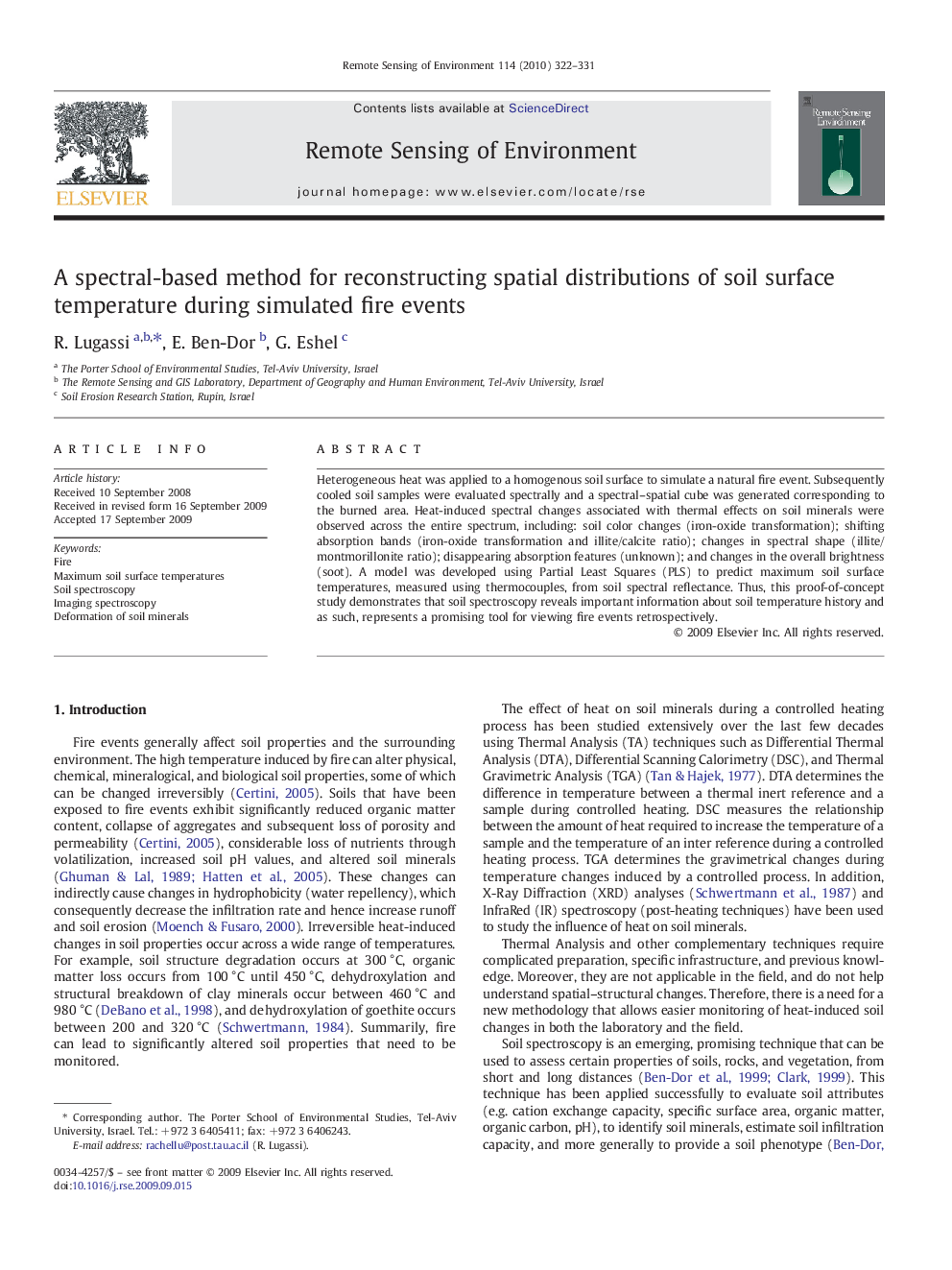| Article ID | Journal | Published Year | Pages | File Type |
|---|---|---|---|---|
| 4459992 | Remote Sensing of Environment | 2010 | 10 Pages |
Heterogeneous heat was applied to a homogenous soil surface to simulate a natural fire event. Subsequently cooled soil samples were evaluated spectrally and a spectral–spatial cube was generated corresponding to the burned area. Heat-induced spectral changes associated with thermal effects on soil minerals were observed across the entire spectrum, including: soil color changes (iron-oxide transformation); shifting absorption bands (iron-oxide transformation and illite/calcite ratio); changes in spectral shape (illite/montmorillonite ratio); disappearing absorption features (unknown); and changes in the overall brightness (soot). A model was developed using Partial Least Squares (PLS) to predict maximum soil surface temperatures, measured using thermocouples, from soil spectral reflectance. Thus, this proof-of-concept study demonstrates that soil spectroscopy reveals important information about soil temperature history and as such, represents a promising tool for viewing fire events retrospectively.
